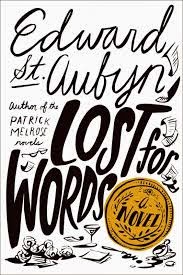This review of Janice Pariat's Seahorse appeared in the current issue of India Today.
 Written
in a folkloric style best described by the epigraph that referenced Alejo
Carpentier’s "marvellous real", Janice Pariat’s collection of short
stories, Boats on Land, was notable
for its evocation of lives past and present in Shillong and its environs. With Seahorse, her debut novel, Pariat
extends her range to come up with a filigreed tale of disquiet and discontent,
of longing and loss, based on the Greek myth of sea-god Poseidon and his young
acolyte and lover, Pelops.
Written
in a folkloric style best described by the epigraph that referenced Alejo
Carpentier’s "marvellous real", Janice Pariat’s collection of short
stories, Boats on Land, was notable
for its evocation of lives past and present in Shillong and its environs. With Seahorse, her debut novel, Pariat
extends her range to come up with a filigreed tale of disquiet and discontent,
of longing and loss, based on the Greek myth of sea-god Poseidon and his young
acolyte and lover, Pelops.
 Written
in a folkloric style best described by the epigraph that referenced Alejo
Carpentier’s "marvellous real", Janice Pariat’s collection of short
stories, Boats on Land, was notable
for its evocation of lives past and present in Shillong and its environs. With Seahorse, her debut novel, Pariat
extends her range to come up with a filigreed tale of disquiet and discontent,
of longing and loss, based on the Greek myth of sea-god Poseidon and his young
acolyte and lover, Pelops.
Written
in a folkloric style best described by the epigraph that referenced Alejo
Carpentier’s "marvellous real", Janice Pariat’s collection of short
stories, Boats on Land, was notable
for its evocation of lives past and present in Shillong and its environs. With Seahorse, her debut novel, Pariat
extends her range to come up with a filigreed tale of disquiet and discontent,
of longing and loss, based on the Greek myth of sea-god Poseidon and his young
acolyte and lover, Pelops.
This
is the story of Nem, and of the ways he deals with the end of his affair with
Nicholas, a charismatic and enigmatic art historian whom he meets when studying
literature in Delhi. Arriving in the city from a town in the north-east, Nem
finds himself somewhat of an outsider at first; it is Nicholas who opens up for
him worlds of art and music he is enthralled by. The role of Ananda to
Nicholas’s Buddha ends with the latter’s sudden disappearance. Nicholas had once
remarked to Nem that he was struck by the manner in which works of art change
in meaning and significance according to shifts in the world outside;
similarly, Nem – a blank slate, who empathises with Svevo’s men without
qualities -- has to now remake and be re-made.Years later, while on a literary
fellowship in London, he is finally offered the chance to piece together and
decipher incidents from the past.
Much
of Seahorse, then, is about the
inscription of desire on the slate of memory. “We are shaped by absence,”
thinks Nem. “The places that escape our travels, the things we choose not to
do, the people we’ve lost.” (A sentence that brings to mind the words of the
recently-deceased Mark Strand: “In a field/I am the absence/of field. /This is/always
the case. /Wherever I am/I am what is missing”.) This sentiment is matched by a
mode of narration that, for the most part, shows incidents broken up into
separate sequences of action and aftermath; a wholeness comprised of fragments,
a mosaic of remembrance and yearning.
It
is also the case, however, that the novel sags slightly in the middle, during
the long episodes of Nem’s life in London — despite the attempt to provide a
harmonic resonance via the loops of longing and variations of sexual attraction
that Nem’s friends experience. Then, there are occasions when the poetic
threatens to tip over to the portentous (“Prophecies are the most scientific of
supernatural phenomena, for they, like science, invest in a single outcome. The
one truth.”) In addition, the accident in the English countryside at the end,
though it continues the mythic parallelism, does come across as a trifle staged
and out of place with Seahorse’s
otherwise wistful, gentle tone.
Leaving
all of that aside, Pariat’s prose is beguiling: take, for instance, her pithy
descriptions of interiors and exteriors. It’s a pleasure of read of the “pale
fury” of the Red Fort; of rooms “as desolate as churches”; of the wings of a
building “spread long and low, like a bird in flight”; of London being “filled
with old light”; and of a “big-bellied sky” pressing against the tops of
buildings. Appropriately enough, Seahorse
is also shot through by images of water, be they in aquariums, swimming pools
or the seaside.
The
paradox of memory, writes Pariat, “is that it gives you back what you had on
condition that you know it has been lost”. To regain it, she continues, “you
must remember it has gone; to remake the world, you need to first understand
that it has ended”. Seahorse, then,
is a fine and estimable account of the refashioning of an interior world
suffused by a pining for what has been lost.













